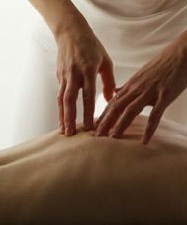

Normally, you would see an ad here. Maybe you are using an ad blocker. I respect that, but this site relies on revenue from ads to continue. Maybe as an alternative you would consider making a donation on the Contribute page.
Normally, you would see an ad here. Maybe you are using an ad blocker. I respect that, but this site relies on revenue from ads to continue. Maybe as an alternative you would consider making a donation on the Contribute page.
Copyright © Sirius Publishing 2006-2019


Physical Level
The first system in this model is the physical body and the type of information it processes is, of course, the physical senses.
Simple! Well yes! But how did we identify this system? For the most part it is self evident that the body exists, and that it processes sensory information. How do we know this? Because it is part of our direct experience.
For now, I would like to appeal to a similar ‘common sense’ approach to identifying other information processing systems. If you have a certain experience and I have the same experience then that experience is probably valid. You could argue that it is a shared hallucination or that we are just brains floating in a jar being experimented on by Aliens, but let’s not.
When we move on to discuss experiences that are not so common, for instance religious experiences we will need to ask, if not everybody has these experiences, do sufficient numbers of people have these experiences to make us think they are not imagined?
This is not to say that if a significant number of people have an experience this makes it ‘real’, only that it is not one individuals delusion. If a significant number of people have an experience it suggests only that it is ‘wired into’ the human system and therefore worthy of discussion.
Incidentally the physical senses are far richer than the usual, touch, taste, sight, hearing, and smell. There is also proprioception telling us where our body is in space, stretch receptors telling us about the state of our muscles, which is particularly relevant to our ‘gut feelings’. In fact researchers now believe we may have up to 21 physical senses.
Think that massage feels good? Try adding drugs
New Scientist 30 January 2013
YOU don't need us to tell you that certain types of touch - massage and stroking - can be pleasurable. Nerves dedicated to creating these feelings have been identified and artificially stimulated in mice, leading to hope that the work could aid the development of drugs that relieve pain or stress.
Some nerves rapidly transmit sensations of touch or pain to the brain, but others work much more slowly. These C-tactile fibres, as they are known in humans, are found under hairy skin and respond to stroking.
David Anderson at the California Institute of Technology in Pasadena and colleagues used calcium imaging to identify similar bundles of nerves in mice.
When the mice were in a special chamber, the team injected them with a chemical that activated these nerves. Afterwards, the mice visited the chamber almost twice as often as they had before, suggesting that they enjoyed the experience and wanted more (Nature, DOI: 10.1038/nature11810).
A drug that evokes a similar response in humans could boost the beneficial effects of skin-to-skin contact such as massage in rehabilitation or for psychiatric conditions, says Johan Wessberg at the University of Gothenburg in Sweden.
Interactions involving stroking are common among many mammals, particularly in nurturing, and removing this contact can impair development. "For the first time we are getting a neurological basis for these phenomena," says Francis McGlone at Liverpool John Moores University in the UK.
